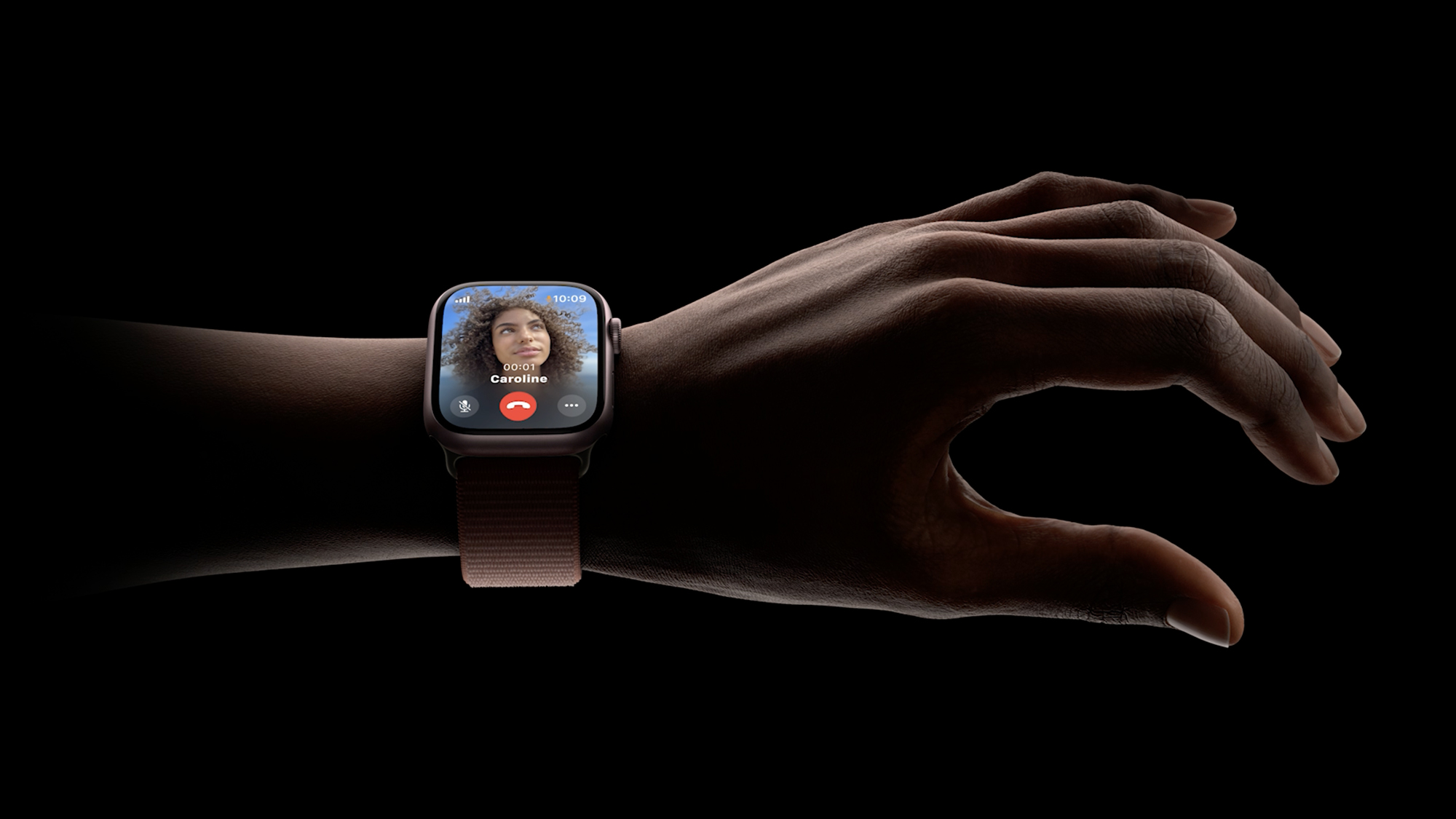

If your hands are full with groceries or books, or hanging on to a subway car handrail or dog leash, then it’s not easy to operate your Apple Watch in the normal way—by reaching over to tap the screen or pressing the Digital Crown.
That’s the thinking behind Double Tap, a new gesture available with watchOS 10.1. As its name suggests, it lets you tap your forefinger and thumb together twice, with the same hand that your watch is on, to operate the wearable without touching it. It means you can answer calls and browse through screens with one hand rather than two, and it promises to be very helpful.
For Double Tap to work, you do need the latest Apple Watch 9 or Apple Watch Ultra 2, because the AI smarts of the S9 chipset inside these models is required to recognize the gesture you’re making. You also need watchOS 10.1 (tap My Watch > General > Software Update in the Watch app on your iPhone to look for updates).
Older Apple Watch devices can still make use of a similar feature called AssistiveTouch, which is a more comprehensive way of controlling everything that happens on an Apple Watch with one hand. AssistiveTouch is available on every Apple Watch since the Apple Watch 4, including the Apple Watch 9 and Apple Watch Ultra 2.
Using Double Tap

As soon as you’ve upgraded to watchOS 10.1, Double Tap should be enabled automatically and ready to go. You can turn it off, if you ever need to, by opening up the Settings app on your watch, then choosing Gestures and Double Tap, and turning off the Double Tap toggle switch.
To double tap, lift up your Apple Watch first, as you would do if you were checking the time. On the hand attached to the wrist where your Apple Watch is, bring your index finger and thumb together twice in quick succession. The only times Double Tap won’t work is when a Sleep Focus mode is active, or when the watch is in Low Power Mode.
What the gesture triggers will depend on what’s on screen. If there’s a call coming in, it’ll answer the call. If there’s a timer running, a double tap will pause it (and restart it). If a notification has come in, it will open the notification so you can read it. In general, a double tap will perform what Apple calls the “primary action” for the screen you’re on.
For a couple of functions, you can customise what a double tap does: When music is playing you can choose whether a double tap pauses playback or skips to the next track, and when Smart Stack widgets are on screen you can choose whether a double tap advances through the widgets or opens the first available one.
To change this functionality, open the Settings app on your watch, then tap Gestures and Double Tap. Select Playback and you can pick between Play/Pause and Skip, or select Smart Stack and you can choose between Advance or Select.
Using AssistiveTouch

Another way of using your Apple Watch with just one hand is to use AssistiveTouch, which is supported on every model back to the Apple Watch 4 from 2018 (including the Apple Watch 9 and the Apple Watch Ultra 9). It’s designed for people who are physically unable to use their other hand to operate their watch, but anyone can activate it.
AssistiveTouch covers a wider range of gestures, including a double tap, and is more comprehensive in terms of helping you operate the smartwatch. Activating it is more deliberate though: It doesn’t have the fluidness and ease-of-use of Double Tap, which uses machine learning algorithms to recognize wrist and finger movements. You can’t use Double Tap when AssistiveTouch is active.
To enable AssistiveTouch, open the Settings screen on your Apple Watch, then choose Accessibility and AssistiveTouch, then tap AssistiveTouch. On the same screen you can select Hand Gestures to change which gestures do what on the watch. AssistiveTouch can also be enabled from the Watch app on your iPhone, via Accessibility, then AssistiveTouch on the My Watch tab.
With AssistiveTouch enabled, raising your wrist will show a blue ring around the screen. You then need to clench your fist twice quickly to actually activate the gestures and switch to AssistiveTouch mode, where a focus ring appears on the first item on the screen (the ring indicates that something can be selected by AssistiveTouch).
The default actions include a thumb-and-index-finger pinch to move to the next item, a double pinch to move to the previous item, a fist clench to tap an item, and a double clench to bring up the action menu (where you can pick from actions like scrolling and pressing the Digital Crown). See here for a full guide to getting around all of the watch’s features and functions using AssistiveTouch gestures.